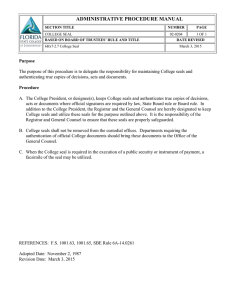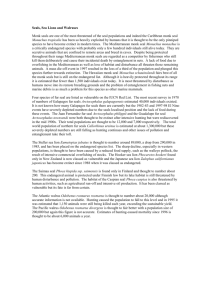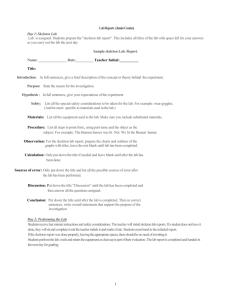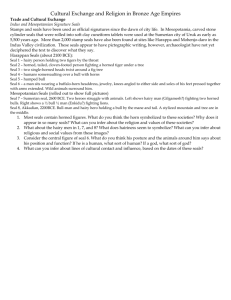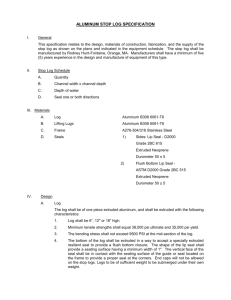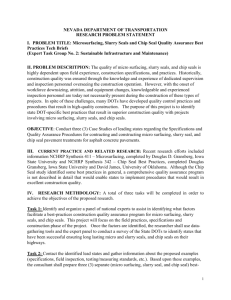The finding of` a new marine mammal in the Ashperon stage near
advertisement
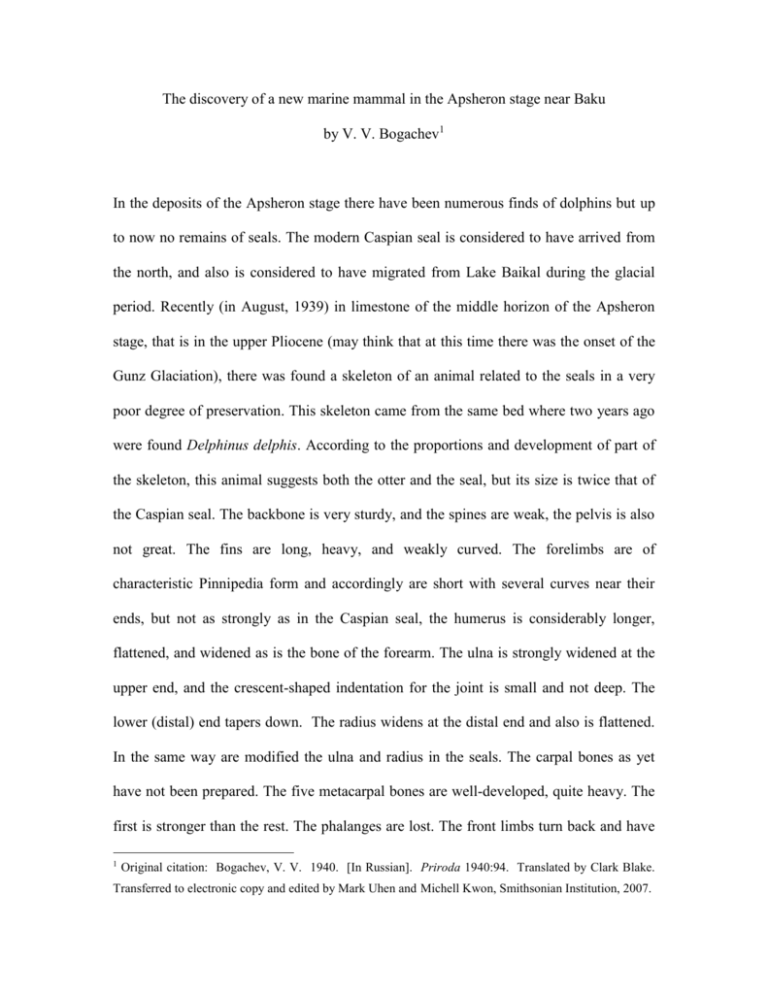
The discovery of a new marine mammal in the Apsheron stage near Baku by V. V. Bogachev1 In the deposits of the Apsheron stage there have been numerous finds of dolphins but up to now no remains of seals. The modern Caspian seal is considered to have arrived from the north, and also is considered to have migrated from Lake Baikal during the glacial period. Recently (in August, 1939) in limestone of the middle horizon of the Apsheron stage, that is in the upper Pliocene (may think that at this time there was the onset of the Gunz Glaciation), there was found a skeleton of an animal related to the seals in a very poor degree of preservation. This skeleton came from the same bed where two years ago were found Delphinus delphis. According to the proportions and development of part of the skeleton, this animal suggests both the otter and the seal, but its size is twice that of the Caspian seal. The backbone is very sturdy, and the spines are weak, the pelvis is also not great. The fins are long, heavy, and weakly curved. The forelimbs are of characteristic Pinnipedia form and accordingly are short with several curves near their ends, but not as strongly as in the Caspian seal, the humerus is considerably longer, flattened, and widened as is the bone of the forearm. The ulna is strongly widened at the upper end, and the crescent-shaped indentation for the joint is small and not deep. The lower (distal) end tapers down. The radius widens at the distal end and also is flattened. In the same way are modified the ulna and radius in the seals. The carpal bones as yet have not been prepared. The five metacarpal bones are well-developed, quite heavy. The first is stronger than the rest. The phalanges are lost. The front limbs turn back and have 1 Original citation: Bogachev, V. V. 1940. [In Russian]. Priroda 1940:94. Translated by Clark Blake. Transferred to electronic copy and edited by Mark Uhen and Michell Kwon, Smithsonian Institution, 2007. the characteristics of paddles, as in seals. The femur is short but of rounded form, and not flattened as in seals. The large and small bones (tibia and fibula) are long and powerful, are weakly fused on the proximal end; somewhat curved. The foot was not preserved. The tail has large vertebrae and is quite long. There are steps being taken to recover the front end of the skeleton (head). The entire skeleton is strongly shattered by blasting and by being hit by hammers and picks during quarrying. According to the development of the rear limbs, the skeleton is very similar to Semantor macrurus Orl. from the freshwater deposits of western Siberia of lower Pliocene or upper Miocene age. According to Yu. A. Orlov, Semantor possesses features of both otters and seals, as if occupying an interval between them but exhibiting a completely independent lateral branch. It is entirely possible that our Apsheron form was also an inhabitant of a marine basin, geologically younger than Semantor, and represents a lateral branch of the trunk from which present-day seals had already separated in the Miocene. The Caspian seal is closer to the Sarmatian and to the [over-lying] Mäotian. The upper Tertiary fresh-water fauna of Western Siberia has some connection with the faunas of the Caspian province (according to both mollusks and fish). Our new find is in the Natural Science-History Museum of the Azerbaijan branch of the Academy of Science, where it is being studied and described as Necromites (gen. novum, A. A. Ismailov) nestoris n. sp. (in honor of Nestor Smirnov, Soviet specialist in Pinnipedia).
